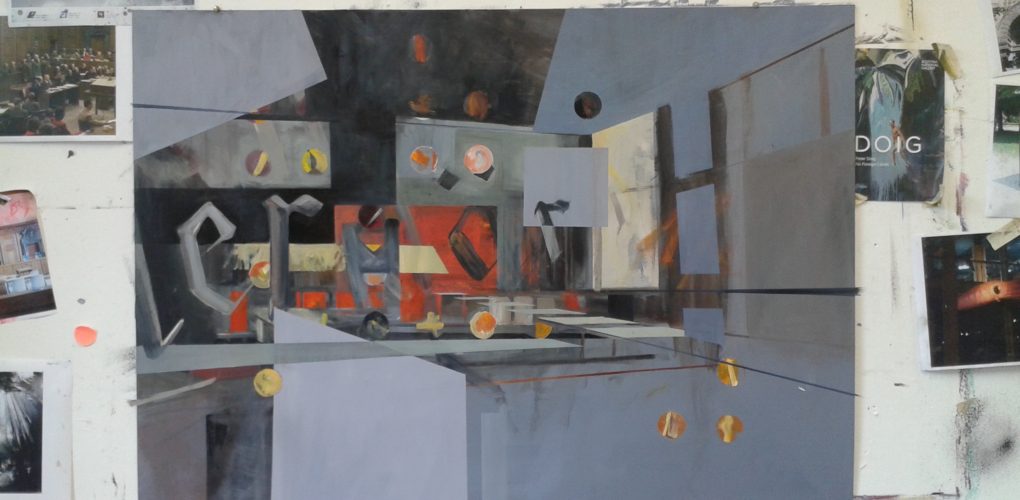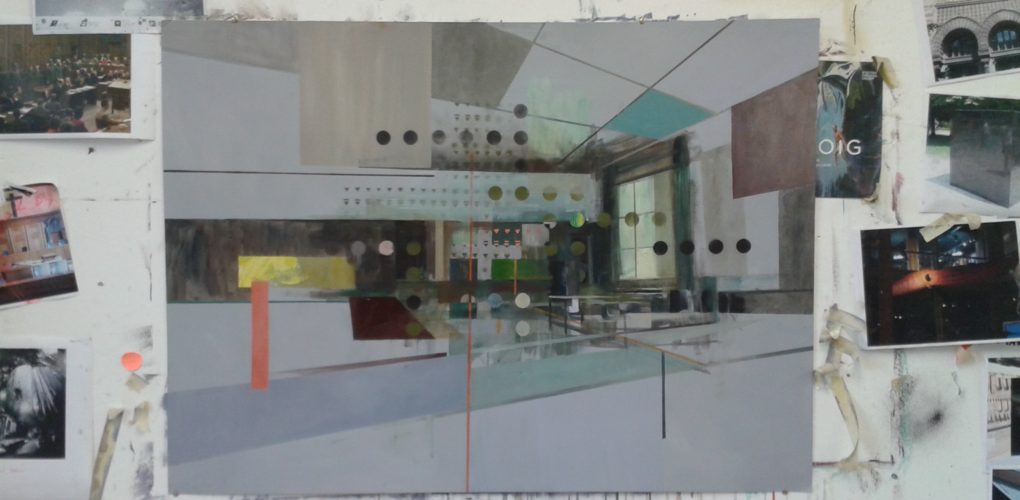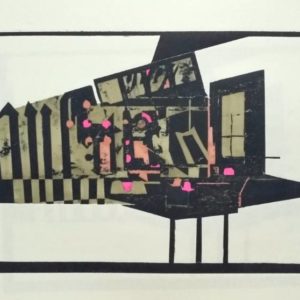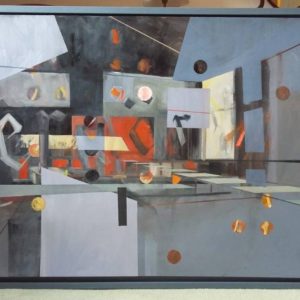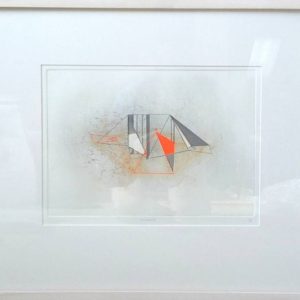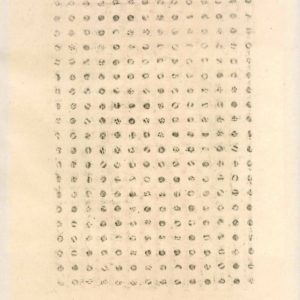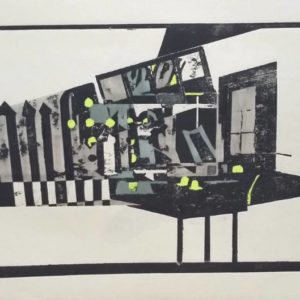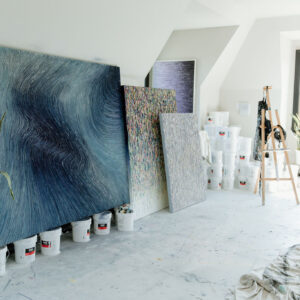One to Watch
 Ginny Elston’s Artworks Play with Space and Color
Ginny Elston’s Artworks Play with Space and Color
Ginny Elston offers a new way of experiencing the world around us. Her works, which are composed of a series of geometric planes and patterns, serve as deconstructed views of large interior spaces. She is primarily concerned with her physical surroundings and how to translate these perspectives onto a two-dimensional surface. She works with a variety of mediums — she is a painter, draughtswoman, printmaker, and installation artist — so her approach is a play with layers and vivid color.
Ginny received an MFA in Fine Art & Humanities from the Duncan of Jordanstone College of Art and Design (DJCAD) in Scotland and studied Painting at the Leith School of Art. She also has a BA (Hons.) in History of Art and French at Manchester University. She has exhibited her works in the UK, most recently at DJCAD.
What are the major themes you pursue in your work?
I’m primarily concerned with space, in a literal sense and in a pictorial/illusionistic sense of the word. I’m fascinated by the feeling of space that can be determined on a flat, two dimensional surface, and also intrigued by our physical sense of objects and space in the real world. I’m also overjoyed by encountering color relationships; I love Brice Marden’s observation “A colour against a colour makes a colour situation.” My work is situated where these two realms meet.
How did you first get interested in your medium, and what draws you to it specifically?
I originally started using acrylics when I first started to paint, at high school and the early years of art school, and I’ve never really stopped. I like using oils, watercolors, drawing materials and printing materials too, but I guess at the moment acrylics are the best medium for achieving what I want to do. It’s incredibly fast drying, it layers over itself very easily and you can easily buy very vivid colors.
How has your style and practice changed over the years?
I’ve gained a lot more confidence and conviction in using color and forming definite shapes in my work. When I first started off painting I was very tentative in making defined, bold marks or shapes, I felt I had to obscure them in order for the whole to work. It’s quite the opposite now. I feel my practice as a whole is continuously changing, reflecting the different environments, states, influences and feelings I experience.
Can you walk us through your process? Do you begin with a sketch, or do you just jump in? How long do you spend on one work? How do you know when it is finished?
For the latest works I’ve done, I really just jump straight in. They are about directly and intuitively responding to what arises on the canvas and my surrounding environment, and in a sense are quite action-led. Previously I would tend to work on several drawings and then begin to move on to paintings. I really can’t say how long I work on a drawing or painting, because I keep returning back to them until I feel I really can’t do anything more to it, unless I risk losing it altogether. It’s impossible to put into words how I know when a painting’s finished, it’s just a feeling I get. It’s still quite a dilemma knowing when to stop!
Who are some of your favorite artists, and why?
Katarina Grosse, Hideyuki Katsumata, Jessica Stockholder and Julie Mehretu are just some of my current favorite artists. Their work has had a profound effect on me, and has directly informed my practice and my philosophy on art. Though their works are quite different from one another, their concerns with rendering objects and images in space speak to me very directly. I very much enjoy their different approaches to exploring the boundaries of where painting ends and sculpture begins, and where the exhibiting space ends and where the ‘works’ begin.
What are some of your favorite experiences as an artist?
I really live for the mixture of experiences that being an artist entails. Periods of long, intense, solitary work and study are often challenging but extremely rewarding, especially when you feel you’ve progressed with a dilemma you’ve been battling with. These mixed with lively and informative debates, critiques and lectures or seminars in a school environment really bring your practice to life. Teaching alongside your own practice can therefore be an exceptional combination, as difficult as it may be to find the balance between the two.



